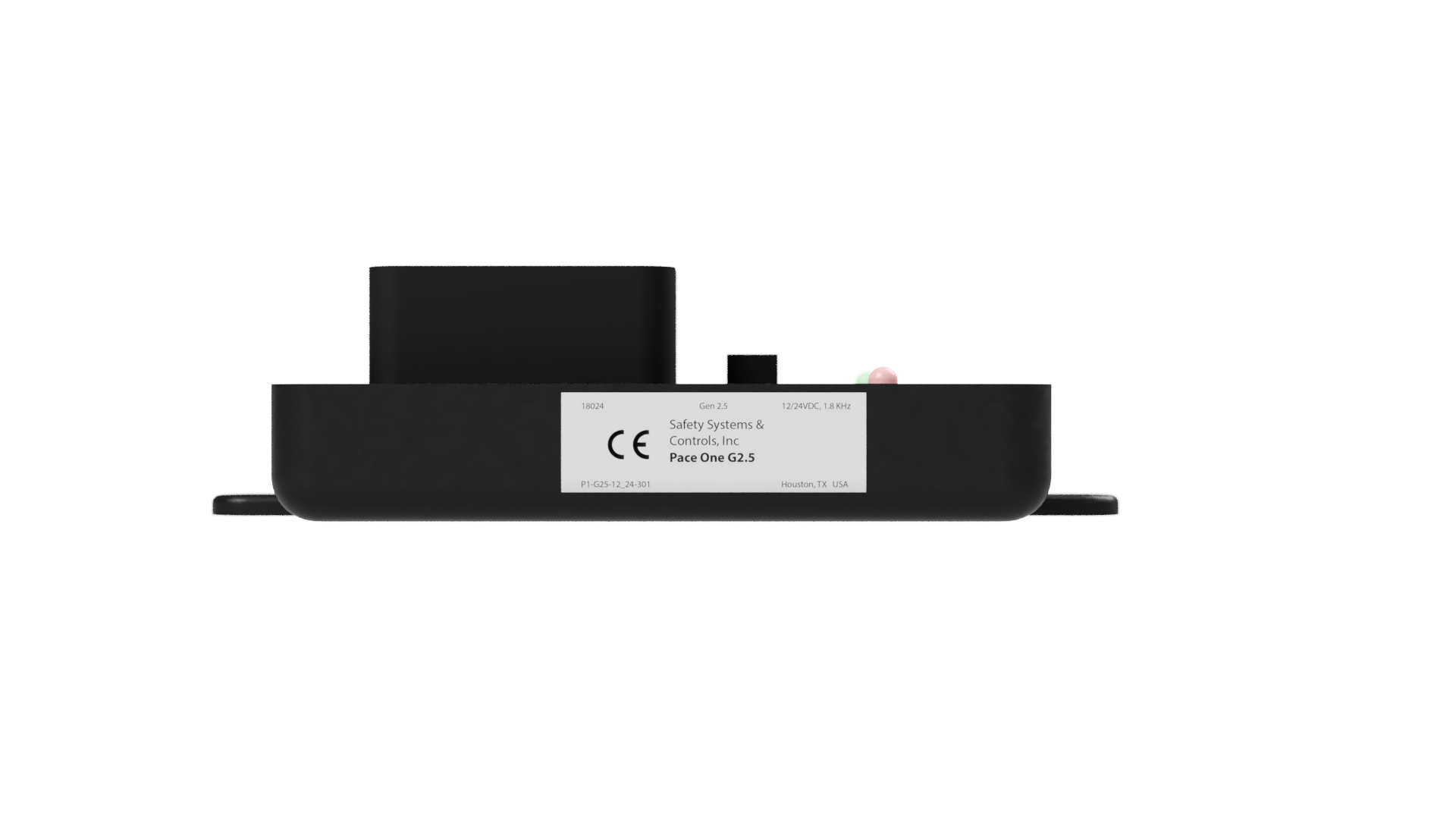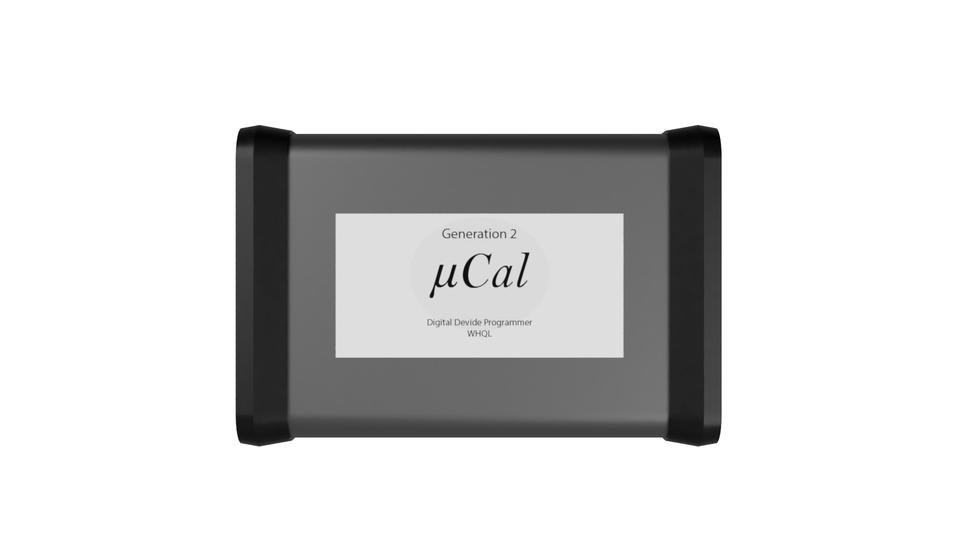PACE - ONE ™ ZSC
Zone Speed Control
Multiple Zones
The PACE-ONE™ ZSC offers up to four different zones and speeds. It is built on the PACE-ONE™ speed limiter, but with added zone controls.
Efficient Speed Control
The PACE-ONE™ ZSC can greatly improve productivity in environments where speed limit is lowered through out the entire facility, in contrast to the speed limit being lowered only in the required areas of the facility. This will leave fasts zones fast, and slow zones slow.
No Wires
The IR/RF transmitters for the PACE-ONE™ ZSC allow for quick and simple facility installation. With each transmitter requiring only one connection to power.
Need a quote?
Give us a call at :
(713) 465 - 8839
HOW IT WORKS
Programmable Zones
Transmitters can be placed through out the facility in order to achieve desired zones with set speed limits. By increasing the amount of transmitters in the facility, a more complex geometry can be achieved for a zone.
Programmable Zones
Transmitters can be placed through out the facility in order to achieve desired zones with set speed limits. By increasing the amount of transmitters in the facility, a more complex geometry can be achieved for a zone.
P1 Zone Speed Transmitter™
The P1 Zone Speed Transmitter™ is installed in fixed location to define a geographical speed zone. The location is typically chosen at a boundary between 2 speed zones. Each P1 Zone Speed Transmitter™ module has 2 individual transmitters. One of the transmitters broadcasts a speed zone in one direction. The other broadcasts another speed zone in the opposite direction. A Zone Speed Receiver™ that is exposed to these zone speed broadcasts is able to detect the zone boundary, and change the allowable maximum speed as it transitions from one speed zone to another.
Each of the 2 transmitters in the P1 Zone Speed Transmitter™ module is capable of transmitting 4 different zones. Only 1 zone can be transmitted by each transmitter at a time. The specific
zone that each transmitter in the P1 Zone Speed Transmitter™ module is transmitting is programmed with a single button during power-up. The single button is located next to a numeric display on the P1 Zone Speed Transmitter™ module. The numeric
display indicates the current zone selection. It also shows the selected zone during programming. The display only shows the zone information during power-up/start-up to conserve power. A
Green Status OK light Indicates that everything is working during normal operation. The green status light is blinking with a relatively low duty cycle to conserve power.

P1 Zone Speed Transmitter™
The P1 Zone Speed Transmitter™ is installed in fixed location to define a geographical speed zone. The location is typically chosen at a boundary between 2 speed zones. Each P1 Zone Speed Transmitter™ module has 2 individual transmitters. One of the transmitters broadcasts a speed zone in one direction. The other broadcasts another speed zone in the opposite direction. A Zone Speed Receiver™ that is exposed to these zone speed broadcasts is able to detect the zone boundary, and change the allowable maximum speed as it transitions from one speed zone to another.
Each of the 2 transmitters in the P1 Zone Speed Transmitter™ module is capable of transmitting 4 different zones. Only 1 zone can be transmitted by each transmitter at a time. The specific
zone that each transmitter in the P1 Zone Speed Transmitter™ module is transmitting is programmed with a single button during power-up. The single button is located next to a numeric display on the P1 Zone Speed Transmitter™ module. The numeric
display indicates the current zone selection. It also shows the selected zone during programming. The display only shows the zone information during power-up/start-up to conserve power. A
Green Status OK light Indicates that everything is working during normal operation. The green status light is blinking with a relatively low duty cycle to conserve power.
P1 Zone Speed Transmitter™
The P1 Zone Speed Transmitter™ is installed in fixed location to
define a geographical speed zone. The location is typically
chosen at a boundary between 2 speed zones. Each P1 Zone
Speed Transmitter™ module has 2 individual transmitters. One
of the transmitters broadcasts a speed zone in one direction. The
other broadcasts another speed zone in the opposite direction. A
Zone Speed Receiver™ that is exposed to these zone speed
broadcasts is able to detect the zone boundary, and change the
allowable maximum speed as it transitions from one speed zone
to another.
Each of the 2 transmitters in the P1 Zone Speed Transmitter™
module is capable of transmitting 4 different zones. Only 1 zone
can be transmitted by each transmitter at a time. The specific
zone that each transmitter in the P1 Zone Speed Transmitter™
module is transmitting is programmed with a single button during
power-up. The single button is located next to a numeric display
on the P1 Zone Speed Transmitter™ module. The numeric
display indicates the current zone selection. It also shows the
selected zone during programming. The display only shows the
zone information during power-up/start-up to conserve power. A
Green Status OK light Indicates that everything is working
during normal operation. The green status light is blinking with a
relatively low duty cycle to conserve power.
P1 Zone Speed Receiver™
The P1 Zone Speed Control Receiver™ detects signals (from the P1 Zone Speed Transmitter™) that define geographical zones in a vehicle environment. The signals define up to 4 different zones. The zone information is also transmitted to a Pace1™ speed controller.
An input signal is also provided to trigger an external event, such a pedestrian proximity. An optical, RF etc. receiver module may be connected to this external trigger signal to facilitate proximity sensing. The external trigger signal overrides any other zone detection, and automatically applies zone 3. Normal zone detection resumes automatically when the external trigger signal is no longer asserted.
The P1 Zone Speed Receiver™ also features a zone memory. The most recently detected zone is stored in memory when the ignition key is turned off. The stored zone is retrieved from memory when the P1 Zone Speed Receiver™ is powered up again (by turning the ignition key on). The P1 Zone Speed Receiver™ utilizes a modulated infrared signal to carry the zone information from the stationary Zone
Speed Transmitter™. The signal is also encoded to further reduce possible interference. The infrared signal medium necessitates line-of-sight communication between the P1 Zone Speed Transmitter™ and the P1 Zone Speed Receiver™.
P1 Zone Speed Receiver™
The P1 Zone Speed Control Receiver™ detects signals (from the P1 Zone Speed Transmitter™) that define geographical zones in a vehicle environment. The signals define up to 4 different zones. The zone information is also transmitted to a Pace1™ speed controller.
An input signal is also provided to trigger an external event, such a pedestrian proximity. An optical, RF etc. receiver module may be connected to this external trigger signal to facilitate proximity sensing. The external trigger signal overrides any other zone detection, and automatically applies zone 3. Normal zone detection resumes automatically when the external trigger signal is no longer asserted.
The P1 Zone Speed Receiver™ also features a zone memory. The most recently detected zone is stored in memory when the ignition key is turned off. The stored zone is retrieved from memory when the P1 Zone Speed Receiver™ is powered up again (by turning the ignition key on). The P1 Zone Speed Receiver™ utilizes a modulated infrared signal to carry the zone information from the stationary Zone
Speed Transmitter™. The signal is also encoded to further reduce possible interference. The infrared signal medium necessitates line-of-sight communication between the P1 Zone Speed Transmitter™ and the P1 Zone Speed Receiver™.
P1 Zone Speed Receiver™
The P1 Zone Speed Control Receiver™ detects signals (from the P1 Zone Speed Transmitter™) that define geographical zones in a vehicle environment. The signals define up to 4 different zones. The zone information is also transmitted to a Pace1™ speed controller.
An input signal is also provided to trigger an external event, such a pedestrian proximity. An optical, RF etc. receiver module may be connected to this external trigger signal to facilitate proximity sensing. The external trigger signal overrides any other zone detection, and automatically applies zone 3. Normal zone detection resumes automatically when the external trigger signal is no longer asserted.
The P1 Zone Speed Receiver™ also features a zone memory. The most recently detected zone is stored in memory when the ignition key is turned off. The stored zone is retrieved from memory when the P1 Zone Speed Receiver™ is powered up again (by turning the ignition key on). The P1 Zone Speed Receiver™ utilizes a modulated infrared signal to carry the zone information from the stationary Zone
Speed Transmitter™. The signal is also encoded to further reduce possible interference. The infrared signal medium necessitates line-of-sight communication between the P1 Zone Speed Transmitter™ and the P1 Zone Speed Receiver™.
PACE-ONE™ G2
The PACE-ONE™ G2 ties the system together by receiving the acquired signals from the P1 Zone Speed Receiver™ and outputting the correct signals to the vehicle ECU in order to reduce throttle when needed. The PACE-ONE™ G2 can also be a stand-alone system in cases where zone speed limiting is not required.
Click here to learn more about our PACE-ONE™ G2 speed limiter.
PACE-ONE™ G2
The PACE-ONE™ G2 ties the system together by receiving the acquired signals from the P1 Zone Speed Receiver™ and outputting the correct signals to the vehicle ECU in order to reduce throttle when needed. The PACE-ONE™ G2 can also be a stand-alone system in cases where zone speed limiting is not required.
Click here to learn more about our PACE-ONE™ G2 speed limiter.

PACE-ONE™ G2
The PACE-ONE™ G2 ties the system together by receiving the acquired signals from the P1 Zone Speed Receiver™ and outputting the correct signals to the vehicle ECU in order to reduce throttle when needed. The PACE-ONE™ G2 can also be a stand-alone system in cases where zone speed limiting is not required.
Click here to learn more about our PACE-ONE™ G2 speed limiter.

Do you have the programmer?
Click the button to get more information on our μCal™ programmer. With this device you can program any of our programmable products.
More Information
Do you have the programmer?
Click the button to get more information on our μCal™ programmer. With this device you can program any of our programmable products.
More Information
